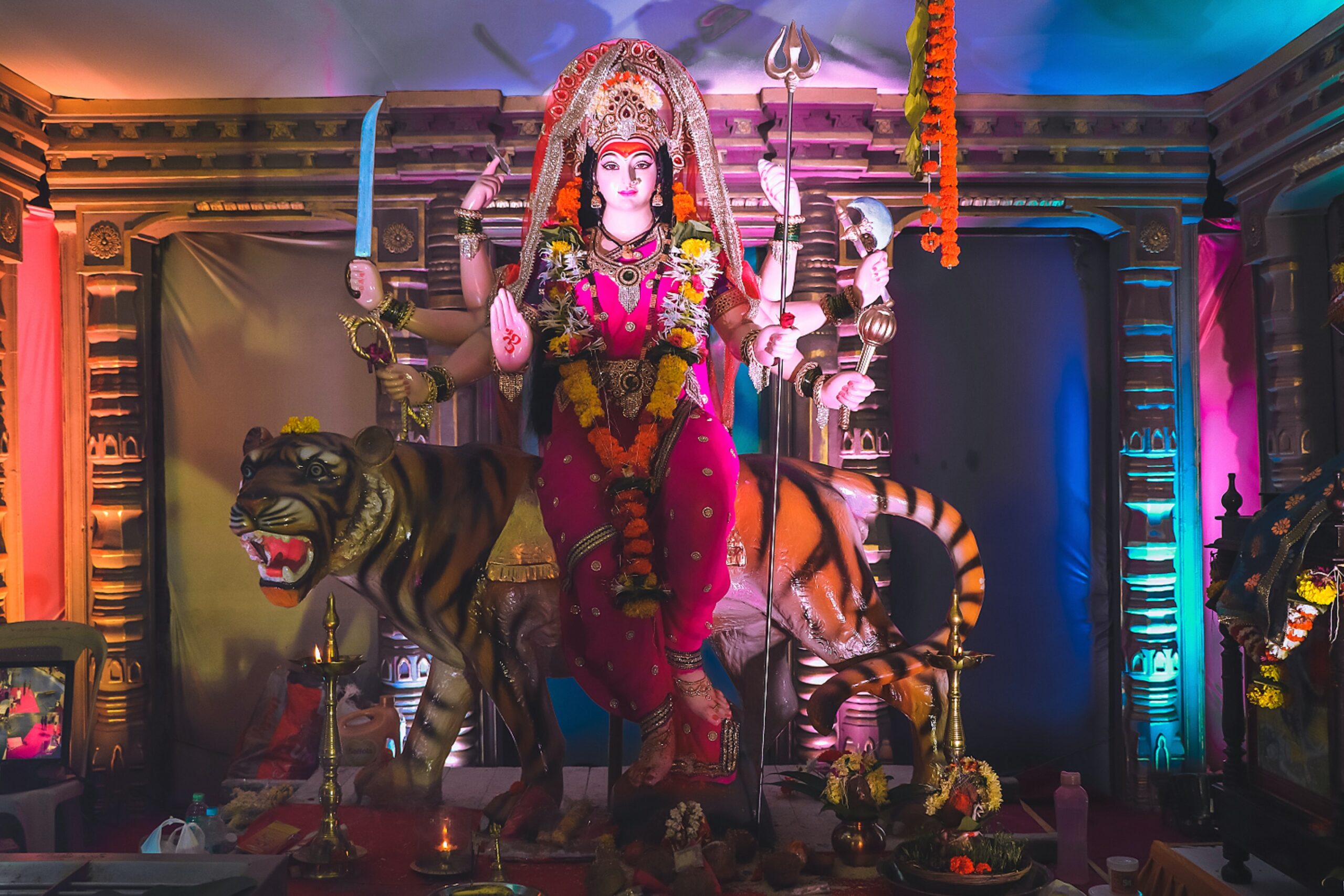Navratri, meaning “nine nights” in Sanskrit, is a colorful and joyous festival celebrated with great enthusiasm by Hindus across India and around the world. This auspicious occasion spans nine nights and ten days and is dedicated to the worship of the Hindu goddess Durga, who symbolizes divine feminine power, protection, and triumph over evil. During Navratri, devotees engage in various rituals, prayers, and cultural activities, including the lively dance performances of Garba and Dandiya. Let’s explore the essence of Navratri in 10 points.
Table of Contents
1. Worship of Goddess Durga
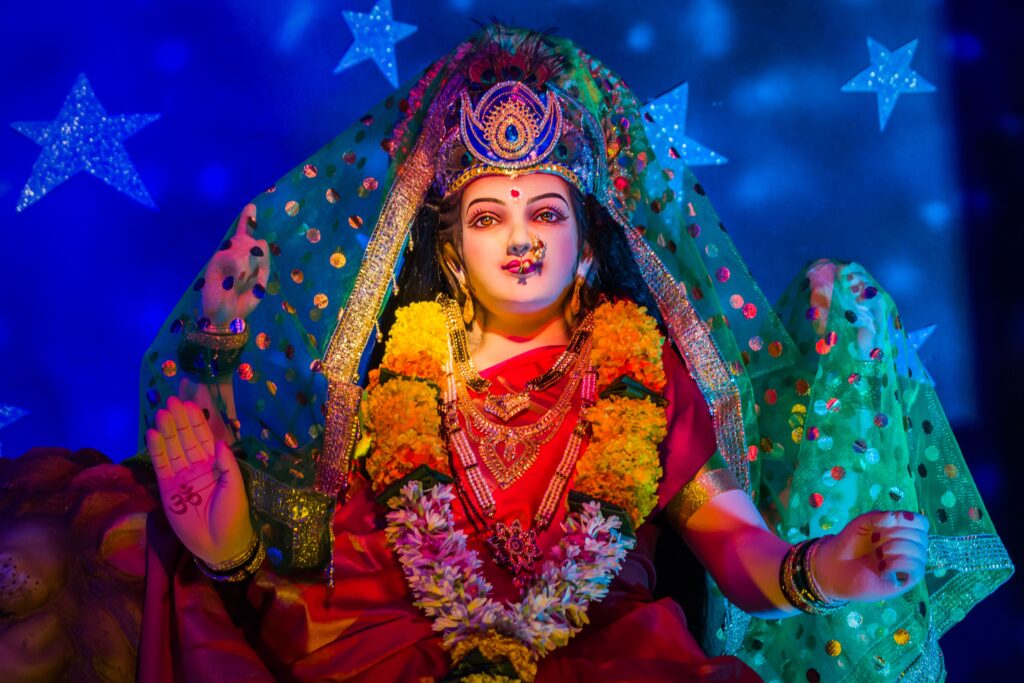
Navratri is primarily a festival dedicated to honoring Goddess Durga, also known as the divine mother. According to Hindu mythology, the goddess manifested in nine different forms during the nine nights, known as Navadurga. Each form represents a distinct aspect of divine energy and is worshipped with devotion and reverence.
2. Symbolism of Navratri
Navratri holds profound spiritual significance, symbolizing the victory of good over evil. The festival’s origin lies in the tale of Goddess Durga’s triumph over the demon Mahishasura, signifying the eradication of negative forces and the restoration of righteousness.
3. The Nine Nights of Navratri
During Navratri, each night is dedicated to worshipping one of the nine forms of Goddess Durga. The first three nights are devoted to Goddess Durga as the powerful and fierce form, seeking her blessings to destroy negativity. The next three nights venerate Goddess Lakshmi, symbolizing prosperity and abundance. The final three nights honor Goddess Saraswati, representing knowledge, wisdom, and arts.
4. Garba Dance: Celebrating Life and Fertility
Garba is a traditional dance form that originated in the state of Gujarat, India. It is performed in circular formations around a central lamp or an idol of Goddess Durga. The circular movements symbolize the cyclical nature of life, creation, and the universe.
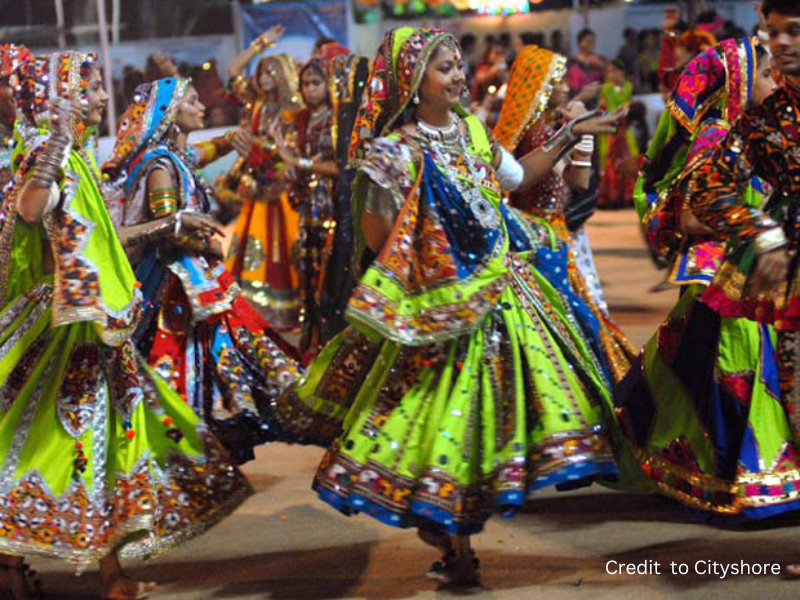
The dance involves gracefully moving in concentric circles, clapping hands in rhythm, and forming intricate patterns, evoking a sense of unity and devotion among the participants.
5. Dandiya Dance: Revering Lord Krishna’s Playfulness
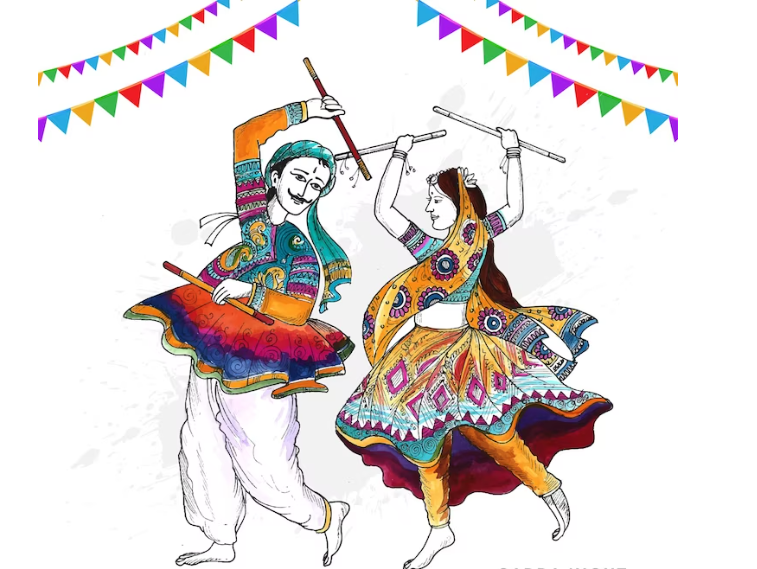
Dandiya is another exuberant dance form associated with Navratri. Participants hold colorful sticks called “dandiyas” and dance in pairs or groups. The dance is often performed in honor of Lord Krishna’s playful interactions with the Gopis (cowherd girls) from Hindu mythology. The rhythmic and energetic movements of Dandiya create a lively and celebratory atmosphere.
6. The Significance of the Tenth Day – Vijayadashami or Dussehra
The tenth day of Navratri, known as Vijayadashami or Dussehra, marks the conclusion of the festival. It is a day of victory and celebration, signifying the triumph of good over evil. On this day, effigies of the demon Ravana are burned in various parts of India, representing the defeat of evil forces
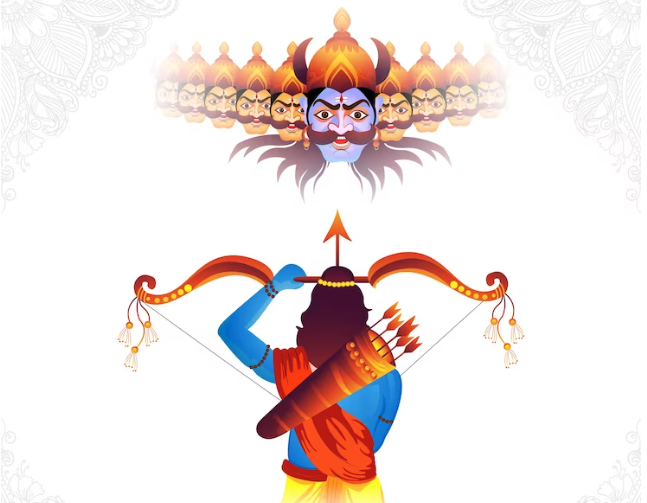
7. Fasting and Devotion
Many devotees observe fasts during Navratri as a way to purify the body and mind and to show their devotion to Goddess Durga. Fasting practices may vary from region to region, but they often involve abstaining from certain foods and consuming only simple, sattvic (pure) meals.
8. Regional Variations in Navratri Celebrations
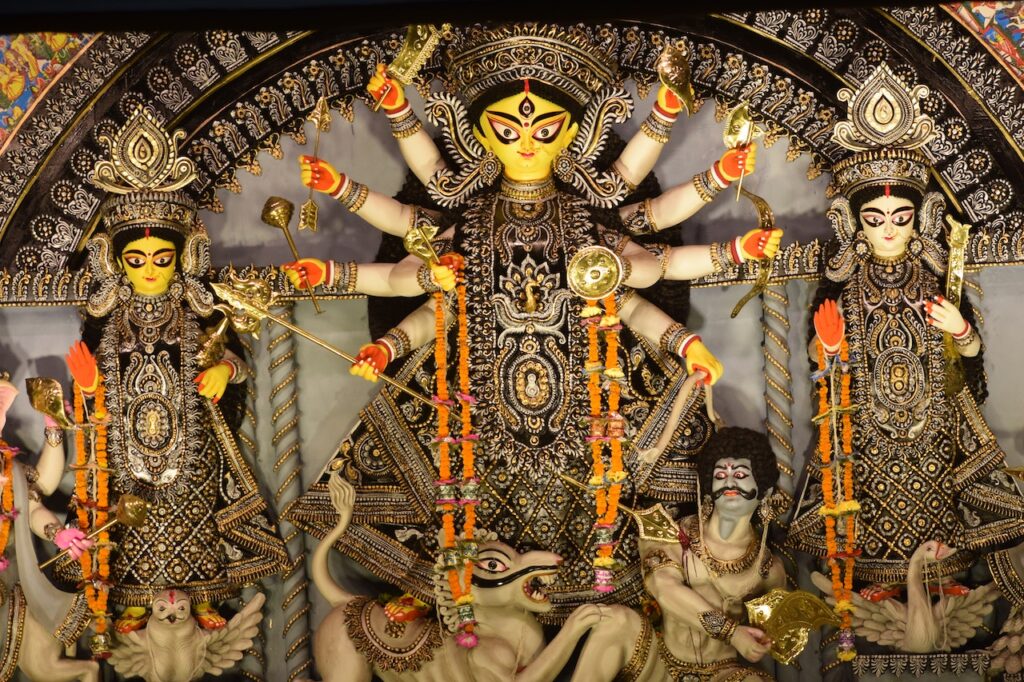
Navratri is celebrated with unique customs and traditions across different regions of India. In Gujarat, it is marked by vibrant Garba and Dandiya nights, whereas in West Bengal, it is celebrated as Durga Puja with elaborate pandals and grand processions. Each region adds its cultural flair and significance to the festival.
9. Social Gatherings and Community Bonding
Navratri fosters a sense of community and camaraderie among people. Social gatherings, fairs, and cultural events are organized during this time, providing an opportunity for friends and families to come together and celebrate the divine grace of Goddess Durga.
10. Global Celebrations of Navratri
Navratri’s vibrant spirit and inclusivity have transcended borders, making it a widely celebrated festival beyond India’s borders. Hindu communities around the world partake in the festivities, uniting in devotion and cultural heritage.
FAQs
1. When does Navratri take place?
Navratri occurs four times a year, but the most widely celebrated ones are Chaitra Navratri (March-April) and Sharad Navratri (September-October).
2. What are the Nine Forms of Goddess Durga worshipped during Navratri?
The nine forms of Goddess Durga worshipped during Navratri are Shailaputri, Brahmacharini, Chandraghanta, Kushmanda, Skandamata, Katyayani, Kalaratri, Mahagauri, and Siddhidatri.
3. How is Navratri celebrated in different regions of India?
Navratri celebrations vary across different regions of India. In Gujarat, it is marked by exuberant Garba and Dandiya dance nights, while in West Bengal, it is observed as Durga Puja with grand pandals and processions.
4. Can people of all ages participate in Garba and Dandiya dance?
Yes, people of all ages, from children to the elderly, actively participate in Garba and Dandiya dance, making it an inclusive celebration.
5. Are there any specific rituals during Navratri?
During Navratri, devotees light lamps or diyas, recite hymns and prayers, and perform aarti (ceremonial worship) as part of the rituals.
6. Is Navratri only celebrated by Hindus?
While Navratri has its roots in Hindu culture, its spirit of celebration and inclusivity welcomes people from all backgrounds to join in the festivities.
7. What are the dietary practices during Navratri?
During Navratri, some people observe fasts and refrain from consuming certain foods like grains, pulses, and non-vegetarian items. Fasting practices may vary based on individual beliefs and customs.
8. How do people conclude Navratri celebrations?
The festival culminates on the tenth day, Vijayadashami or Dussehra, with processions, feasting, and various cultural performances.
9. Can tourists participate in Navratri celebrations in India?
Yes, tourists are welcome to witness and participate in Navratri celebrations in India, as it offers a unique experience of rich cultural heritage and joyful festivities.
10. What is the significance of Garba and Dandiya dance during Navratri?
Garba and Dandiya dance forms are a celebration of life, devotion, and cultural unity. They bring people together, fostering a sense of joy and togetherness while expressing reverence to Goddess Durga and Lord Krishna.
Conclusion
Navratri is a time of devotion, celebration, and cultural splendor. Through the worship of Goddess Durga and the rhythmic movements of Garba and Dandiya dance, the festival instills a sense of reverence and unity among people. Navratri’s message of triumph over evil and the celebration of good resonates deeply in the hearts of millions, making it one of the most cherished and awaited festivals in Hindu culture. As we immerse ourselves in the colors, music, and rituals of Navratri, let us embrace the divine blessings and rejoice in the essence of life and spirituality
